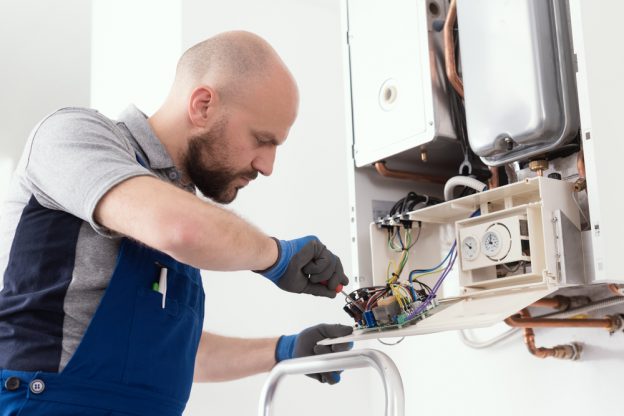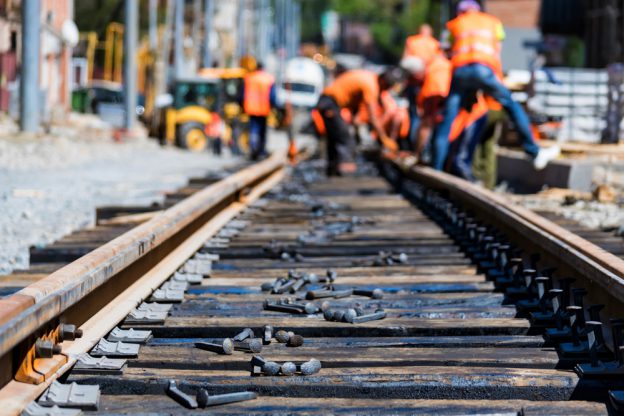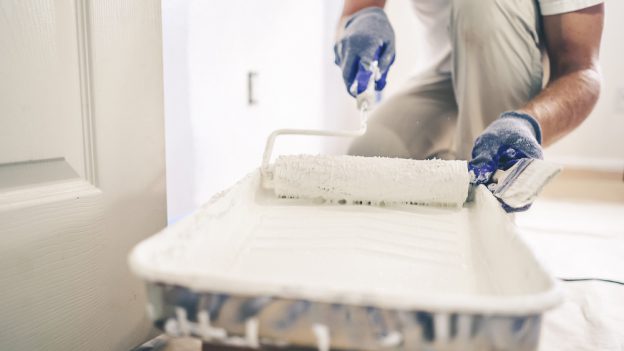What is the C-4 License?
The C-4 Boiler, Hot Water Heating, and Steam Fitting Contractor is the license assigned to contractors in California working on jobs involving hot water systems – boiler systems, steamfitting, heat pumps, and so on.
The C-4 License is designated for painting and decorating contractors in California. It encompasses various activities such as scraping, sandblasting, and applying paints, textures, fabrics, pigments, oils, varnishes, shellacs, stains, fillers, and adhesives.
The Contractors State License Board (CSLB)
The CSLB is the state agency in California responsible for licensing and regulating contractors in the construction industry, including the C-4 License. Everything you do related to the C-4 license
- Application Process: The CSLB manages all the applications for a C-4 contractor
- Qualifications and Experience: The CSLB sets eligibility criteria, including a combination of education, work experience, and/or apprenticeship training
- Examinations: The CSLB administers the trade-specific and law & business exams necessary for licensure
- Background Checks: The CSLB verifies identity and criminal history of all contractors
- Licensing and Renewal: The CSLB issues and renews all contractor licenses
- Consumer Complaints and Investigations: The CSLB handles complaints and can take disciplinary action against contractors through their enforcement division, SWIFT.
What Does A Boiler, Hot Water Heating, and Steam Fitting Contractor Do?
Luckily for us, this classification is easy to understand and very straightforward: if you’re painting or decorating a home with materials and labor costing $500, you’re doing C-4 work.
Key Duties
- Demolishing and removing existing boilers or heating devices.
- Installation, maintenance, and repair of various boiler systems
- Testing, audits, and preventative maintenance
- Design and engineering of advanced mechanical systems
- Monitoring of boiler and heating systems and emergency services
Most Common Types of Jobs For C-4 Contractors
In your day-to-day work as a C-4 Contractor, you’ll most likely find yourself working on these types of jobs:
- Boiler Services: Demolishing and removing existing boilers, boiler troubleshooting, and boiler system maintenance, repair, and retrofit.
- Installation and Engineering: Installation and engineering of advanced mechanical systems, including radiant panel design and engineering, and the installation of new boiler systems after preparing the job site.
- System Maintenance, Repair, and Retrofitting: Emphasizing the ongoing care and upgrades of boiler systems. In California in particular, retrofitting is an extremely lucrative area for any contractor.
- Emergency Services: 24/7 emergency services and monthly monitoring for various boiler systems.
- Environmental and Energy Efficiency Services: Fuel efficiency, energy optimization, and energy audits, for example: AQMD compliance testing.
- Specialized Hot Water Systems: Specialty systems like hotel steam boilers, school and hospital boiler systems, and residential hydronic boiler systems.
Hydronics and Heat Transfer Solutions: IRadiant heat systems, heat services, and hydronic baseboard retrofits. - Planning, Estimation, and Customer Service: Planning and estimating boiler projects. Communicating with customers, whether gencons or homeowners, is something you’ll do every day.
- Safety: Ensuring constant personnel and job site safety, including confined space work and handling dangerous materials.
- Power Boiler Installations: Installation, service, and repair of fire-tube and water-tube steel power boilers and hot-water heating low-pressure boilers.
- Steam Fitting and Piping: It’s in the name – you’ll be doing a ton of installation and maintenance of steam fitting and piping systems, along with fittings, valves, gauges, and pumps. If it’s high-pressure, you can work on it.
- Radiators and Convectors: You already know this, but you’ll be working on a ton of radiators, convectors, fuel oil tanks, fuel oil lines, chimneys, flues, and heat insulation.
- Solar Heating Equipment: The C-4 license also covers work related to solar heating equipment associated with these systems.
Who Needs the C-4 License?
Contractors who do any sort of heating, steam-fitting, or boiler work. If you do any sort of hot water work or work involved in pressurized water involving project costs over $500, you absolutely need a C-4 license.
In reality, that means most anyone doing this work, as anything involving boilers or furnaces or chimneys or anything of that sort will involve expensive materials and labor.
When Do You Need a C-4 License?
Any of the above projects exceeding $500 in labor and materials necessitates a C-4 license. This requirement applies regardless of the project’s complexity or scale.
For smaller projects under $500, a C-4 license is not mandatory. But in reality, that’s rarely applied to anyone working on hot water systems. Considering the cost of most hot water projects, you can expect to need a license.
When it comes to the C-4 license, very few jobs don’t require a C-4 license. You can get away with small jobs like replacing a valve or doing routine testing, but anything beyond basic maintenance will quickly get expensive in California.
How to Get a C-4 License
As established, the CSLB is responsible for licensing, maintaining, and renewing C-4 licenses. There are a number of prerequisites that a contractor must fulfill before the CSLB will assign a C-4 license.
Below you’ll find the requirements for the C-4 License and the Step-By-Step process to get one from the CSLB.
Requirements
- At least 18 years of age
- Valid driver’s license or ID
- Social Security or ITIN number
- Not on probation or parole
- Four years of journey-level experience
- A certifier to verify experience known as the Qualifying Individual
- Documentation of experience if requested.
Step-by-Step Process
- Gain Work Experience: A minimum of four years of experience as a journeyman is required to acquire ANY CSLB license.
- Get Endorsements: Credible witnesses must testify to the applicant’s background and skills. Usually, this is your boss.
- Submit A CSLB C-4 License Application: Complete and submit the application with necessary documentation.
- Pay Fees: Pay all the fees associated with your license.
- Background Check: Submit fingerprints for a background check.
- Take the CSLB Exam: This two-part exam has two parts: a painting-specific exam and a law and business exam.
- Get Bonded And Insured: Obtain a California contractor bond worth $25,000 and Workers’ Compensation insurance for every contractor under the license.
- Receive Your License And Get To Work!: If you’ve followed all of these steps correctly, expect your license in a few weeks at most.
The C-4 License Application and Exam
The CSLB Exam
In order to get your C-4 license, you must pass the C-4 license examination – a 3.5 hour, 200+ question test that poses a real threat to your C-4 dreams.
The CSLB Exam is notorious for breaking even the smartest, most experienced contractors. This 230-question exam can take up to 6 hours and involves two sections: one on the finer points of painting and decorating, and one section on the business and law of contracting.
Exam Breakdown
- The exam consists of two parts, each with 115 questions:
Law & Business Exam: Covering topics like company organization, bidding, cost control, business structures, labor laws, and contractor bonds. - Trade-specific Exam: Focusing on planning and estimating, boiler system installation and maintenance, safety, and various other technical aspects of boiler, hot-water heating, and steam fitting.
Timeline From Application To Licensure
It usually takes 6-8 weeks to receive your CSLB license from the time you apply.
The longest period of time you have to wait is waiting for your application to be processed by the CSLB. This currently takes roughly one month but can take up to six weeks. You can check the current status of your application on the CSLB website.
After you apply for your license and receive affirmation from the CSLB, you must pass the CSLB exam. This takes roughly a week.
After you take the test, you’ll know immediately if you passed or failed. If you pass, congratulations! You can deliver your insurance and bonds and get your license!
If you failed the CSLB exam, don’t worry, you can take the test again. Unfortunately, though, you must wait a few weeks before being able to retake the test.
C-4 License Maintenance and Renewal
Renewal Process
The C-4 license must be renewed every two years. If you don’t renew your license in time, it will cost you extra in fees.
Renewal applications must accurately reflect any changes in business information. If you change address, add anyone to your license, or have any changes at all to your C-4 license, make sure you let the CSLB know.
Exam and Re-Examination
- Exam results are provided immediately after the test, so you’ll know if you passed or not on the day of the exam.
- Unsuccessful candidates receive a performance breakdown for improvement. If you fail, you’ll know the specific areas that you need to improve upon to pass the exam.
- If you fail the exam, you can retake the exam as many times as you like. Note that the CSLB charges an examination retaking fee every time you need to retake the exam.
Fees and Costs
There’s a litany of costs associated with getting your C-4 License. At the very least, expect to spend $700 on your license, with fees increasing or decreasing based on your business structure, exam results, and so on.
- Initial application fee: $500.
- License fee (sole owner): $200; (non-sole owner): $350.
- Re-examination fee: $100.
- Fingerprinting fees: DOJ – $32, FBI – $17.
Should I Get Multiple Licenses As A C-4 Contractor?
Considering how important and interconnected hot water systems are to the larger construction project, C-4 contractors might find themselves wondering if it makes sense to get additional licenses in order to provide a broader service to your community – and make a little bit of extra money in the process.
The answer is – definitely! If you can handle bigger projects, you can naturally make more money as a contractor, and considering you probably already have broad construction knowledge due to the interconnected nature of hot water systems, it’s absolutely worth it to invest in additional licenses to improve your bottom line.
When it comes to getting additional licenses for C-4 hot water systems contractors, you should look for licenses that are complementary to the C-4 license, involve hot water or heating, or are areas of construction where you have existing knowledge.
Class B General Contractor License: Considering how much you need to know to effectively perform the job of an interconnected hot water system like a boiler or a heat pump, you will naturally learn the skills a gen con needs to succeed as well. Picking up this classification will open up a whole new world of contracting opportunities.
C-36 Plumbing License: Plumbing and heating systems go hand-in-hand on pretty much any project, especially in large buildings like schools or apartment buildings, where heating systems may involve extensive piping. By holding both C-4 and C-36 licenses, you can offer a full range of services related to both plumbing and heating. For example, you can install the boiler, do the pipe installation to the shower, and install the shower piping. If you can do all that for your local community, you will never run out of new clients.
C-20 Warm-Air Heating, Ventilating, and Air-Conditioning License: The C-20 license is for heating, ventilation, and air conditioning – anyone can see how these two skill sets dovetail. Since HVAC systems often need to integrate with boiler and hot water heating systems, especially in giant commercial or residential complexes, holding both C-4 and C-20 licenses is a no-brainer for hiring managers. Any customer can see the value in someone who can install all of the heating and cooling systems for their project. Not only can you save them money, but you can net a much bigger profit, without much added cost.
Conclusion
If you’re a steamfitter or a hot water systems specialist, we don’t have to tell you – there’s money to be made working on these systems!
It’s a no-brainer to get your C-4 license if you work on anything related to hot water projects in California. It’s a tiny investment in what is an extremely lucrative specialty in a state that will have continued needs for hot water systems contractors.


